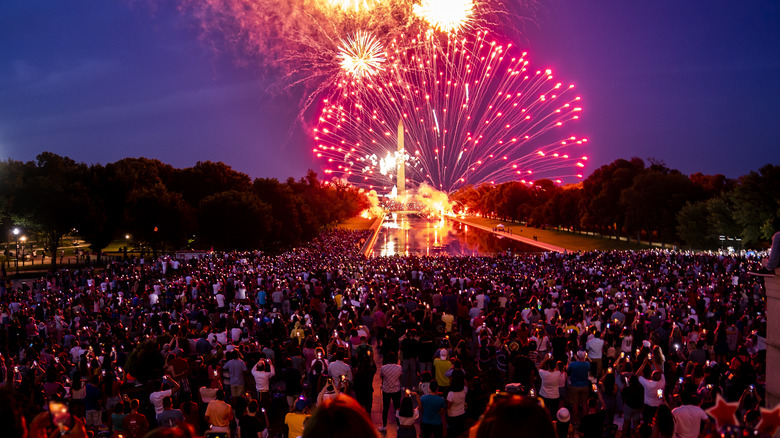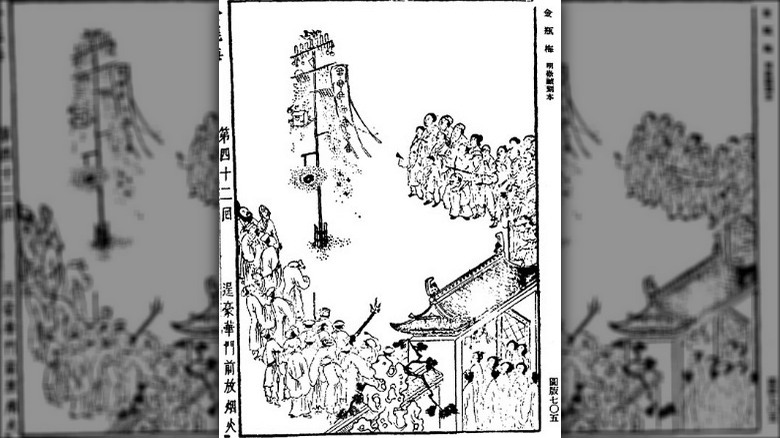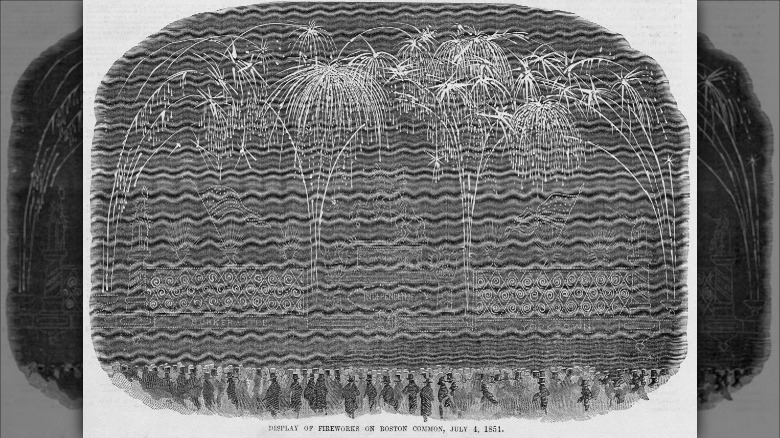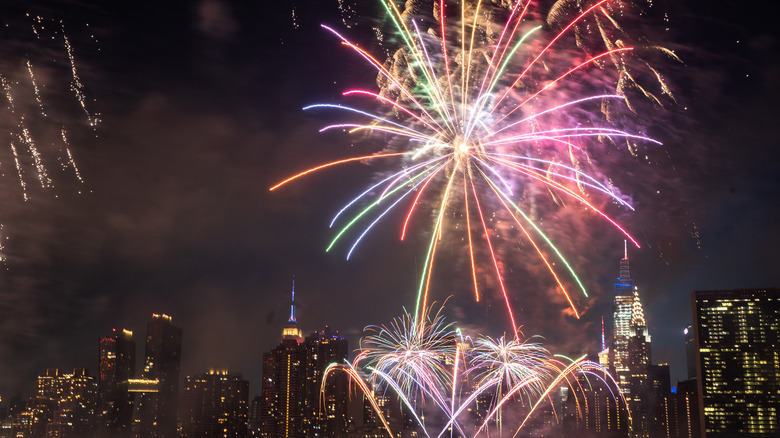How Fireworks Were Invented (And Why We Use Them To Celebrate)
From the opening of the Olympic Games to the Superbowl Halftime Show, from New Year's Eve to Independence Day, great celebrations are often accompanied by beautiful fireworks, the most opulent displays of which can cost hundreds of thousands of dollars.
Modern fireworks displays contain a great deal of technical virtuosity. Rockets burst in a range of colors, are finely choreographed, set to music, and today often contain more futuristic elements, such as laser light shows. However, fireworks themselves are actually a very old invention, having originated in China during the Han Dynasty around 200 B.C., where they were originally made by burning bamboo and were used for both celebrations and ritual purposes. It took another 800 years for the invention of gunpowder, which took Chinese pyrotechnics to a new level and opened the door for the kinds of fireworks we enjoy today.
Fireworks are closely linked to the American identity. The lyrics to Francis Scott Key's "Star-Spangled Banner," which describe "the rocket's red glare, the bombs bursting in air," reportedly refer to the rockets fired by the British during the American War of Independence, the image of which is evoked through firework celebrations as a symbol of American defiance. And though they are unsurprisingly a big feature of many New Year's Eve parties across the country, their association with the Fourth of July has a long historical precedent that goes way back to the beginning of America itself.
The invention of fireworks
The fireworks recorded by historians in ancient China were, of course, rudimentary when compared to the intricate rockets and other devices that are used by pyrotechnicians today. Essentially, the first firecrackers were made by simply setting fire to bamboo sticks which, due to the trapped air in their stalks, burned loudly and brightly on campfires. Sometime after 600 A.D., Chinese pyrotechnicians begin to employ the first forms of gunpowder into the incendiary bamboo sticks, increasing their explosive power considerably.
Fireworks later became established in Europe thanks to gunpowder coming from the East via the Silk Road trade route, possibly by the legendary Italian explorer Marco Polo himself. There, they underwent further evolutions — most notably the addition of substances that changed the color of the explosions, a development that occurred in Italy sometime around the 1830s. The brightly colored explosives featured in numerous major events across the continent, such as the coronations of monarchs and royal marriages.
[Featured image by unknown author via Wikimedia Commons | Cropped and scaled ]
Fireworks on the first anniversary of Independence Day
Fireworks came to America with the first European settlers, with Captain John Smith reportedly holding the first fireworks display on the continent as early as 1608 in Jamestown, Virginia. By the time of the Declaration of Independence, fireworks were already well established on the continent.
Historians now point to founding father John Adams as being especially influential in making fireworks such a central part of the celebrations each Fourth of July. As shared by Boston.com, in the aftermath of Congress voting for independence the Founding Father wrote an excited letter to his wife, Abigail, outlining that the occasion deserved to be celebrated lavishly, and on an annual basis. "It ought to be solemnized with Pomp and Parade," he wrote, "with Shews, Games, Sports, Guns, Bells, Bonfires and Illuminations from one End of this Continent to the other from this Time forward forever more." A quarter of a millennium on, the celebrations are still ongoing.
Fireworks in America today
The love of fireworks shows no sign of abating, with huge displays organized in towns and cities throughout the United States each Fourth of July, continuing John Adams' wish that the country's Independence Day is never forgotten. Today, Americans spend in the region of $1 billion on fireworks each Fourth of July, with the majority of the estimated 268 million pounds of rockets and other explosive devices imported from the country that invented them: China.
But in recent decades there has also been a backlash against the use of fireworks by everyday Americans, with soaring injury figures and concern over the environmental damage they cause, leading to criticism of their private use. Many states impose strict regulations on the types of fireworks that American consumers are allowed to buy and limit the explosive content to a maximum of 50 mg of gunpowder per unit. Meanwhile, the state of Massachusetts has banned the sale of fireworks altogether, though the local government organizes public fireworks displays every Fourth of July.



